By: Anders Løberg
Download this article as a printable PDF
The German submarine U-864 is off Fedje with 65 tons of mercury on board.
It has been there for 75 years, since 9 February 1945. It was found in 2003. All this time, Norway's government has been responsible for mercury pollution to the marine environment by not doing anything to get the poison out of the environment.
NOK 10 million has so far been spent on planning the covering of wrecks and the seabed, which is illegal. This means that the Norwegian government is planning an environmental crime.
U-864 must be raised, it is the only solution in the short and long term. Norway and Western Norway have the expertise, it's just a matter of starting raising.
Since 2003, the Norwegian Environmental Protection Association has been working to raise the submarine U-864, which has 65 tonnes of mercury on board in the cargo keel. We believe that the hull, which lies in two parts at a depth of 150 m outside Fedje, is strong enough to be raised safely. Both pressure hulls are in good condition, and the cargo keel with the mercury containers is welded to the pressure hulls. Today, there is technology that ensures safe lifting without the emission of mercury. If U-864 is left lying around or covered with sand and gravel, in the long term there will be a great risk of mercury leaching, which will form methylmercury, a dangerous nerve agent that will travel up the food chain. A cover with sand and gravel could lead to an explosion and acute spread of mercury in the marine environment in the North Sea and the Barents Sea.
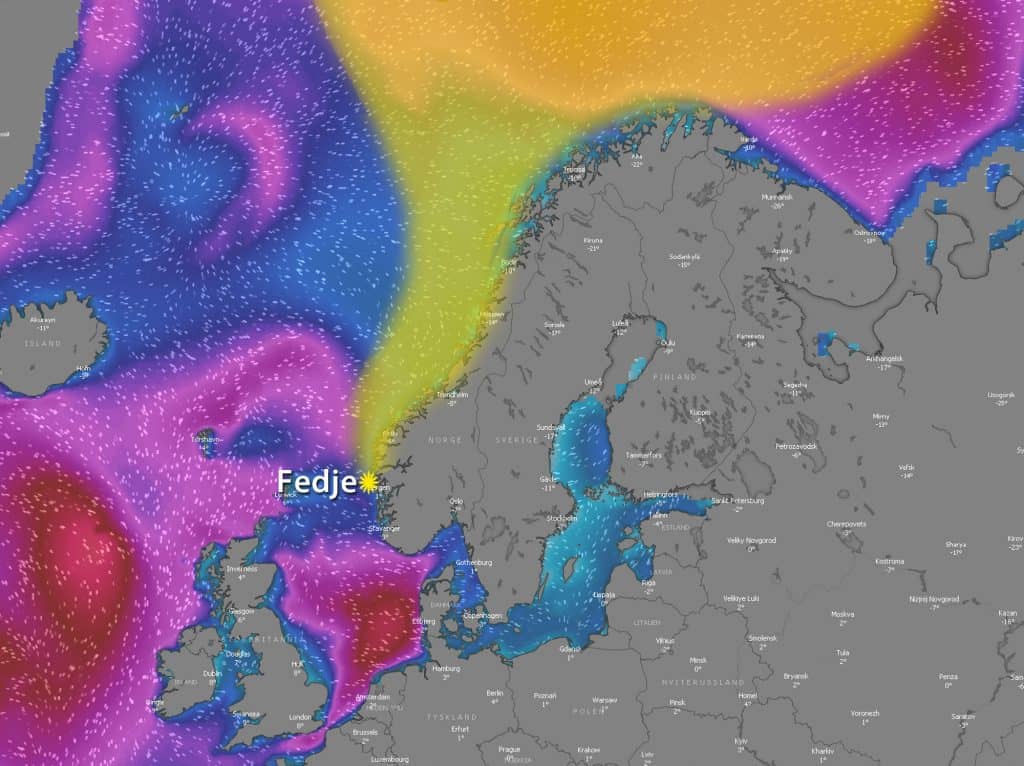
The story of our work with U-864
The Norwegian Environmental Protection Association was in the Storting for the first time at a hearing on the raising of U-864 in 2006, where we referred, among other things, to the raising of a similar submarine off Denmark in 1993. (U-534) Rust tests of, among other things, the cargo keel showed that it had hardly rusted since 1945. U-864's cargo keel is down in the mud, and will then be in even better condition than U-534.
The Storting decided to allocate NOK 10 million for an investigation into the covering of U-864 in 2010, and this has provided the guidance for the Coastal Administration's recommendation for environmental measures for U-864 in 2014, - covering.
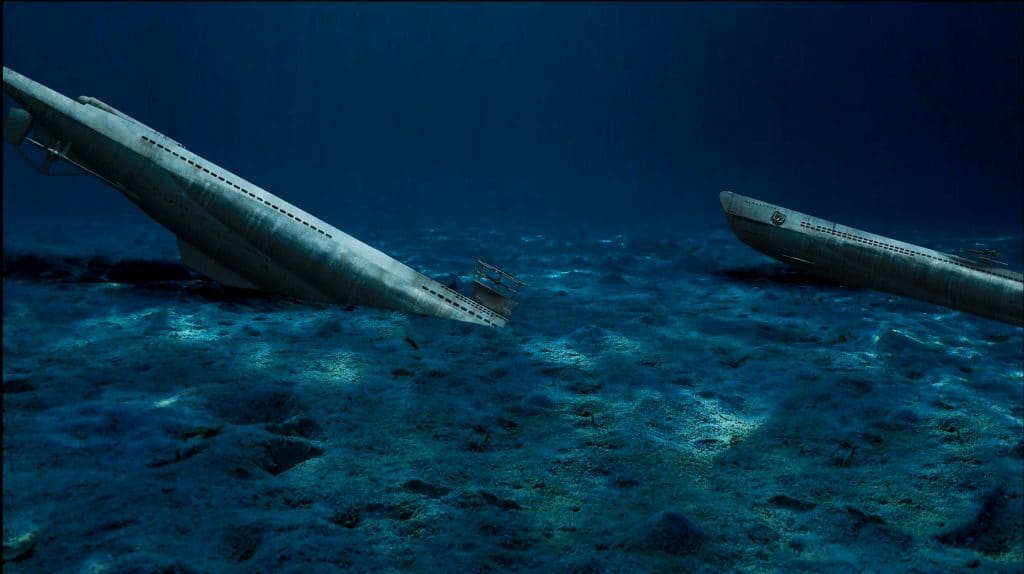
The argument has been, among other things, that the hull is in poor condition, and that an elevation could lead to the spread of mercury. The Norwegian Coastal Agency used an estimate from 2006 which states that approx. 40% of the cargo keel is broken. There must have been 65 tonnes of mercury in the cargo keel.
The Environmental Protection Association has always claimed that the hull parts are strong enough to be lifted safely. No leakage of mercury from the cargo keel has been detected, there are no dietary restrictions around the boat.
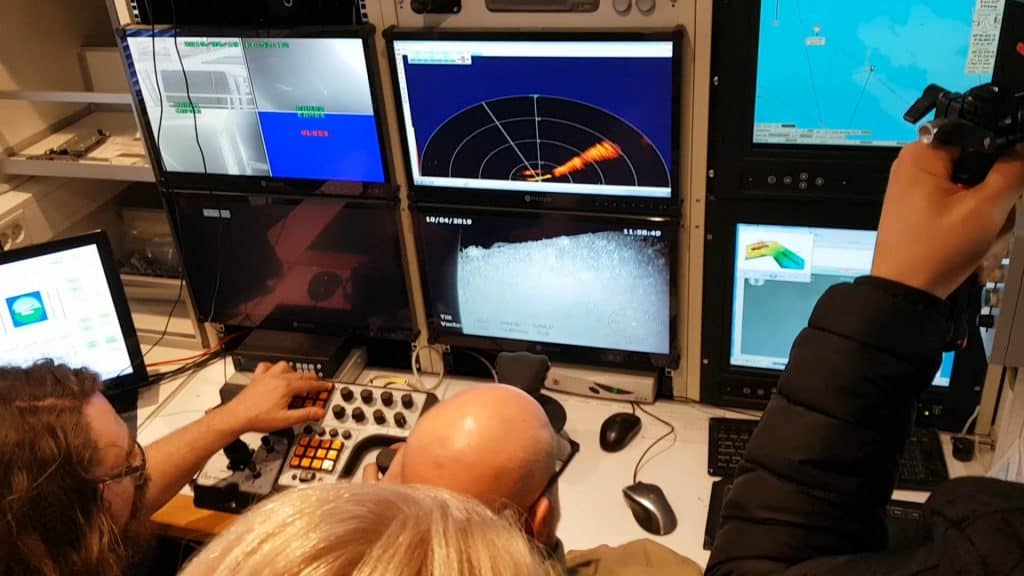
We have had two dives with ROV and video filming on U-864, in June 2010 and in April 2019. The molded hull does not have much rust, and even the wooden planks on the deck are largely intact.
The Norwegian Environmental Association presented our position to the Hordalandsbench in the Storting on 5 March 2019, where a lifting method involves attaching wires to the solid pressure hull, slow lifting from the seabed, and wrapping in Kevlar-reinforced (5 times the strength of steel) latex cloth to prevent leakage of mercury during the rise. (Unitech Energy Group concept).

NMF in the Storting: U-864 must be investigated for lifting with new technology
00:00 - Meet Helge Jordal with the eyewitness account of Kristoffer Karlsen, who was 7 years old when the submarine was torpedoed. | 05:07 – Speech by Jon Askeland, County Mayor Vestland. | 09:02 – Anders Gøksøyr, Professor, Department of Bioscience UiB. | 15:34 – Per Lerøy, Mayor of Austrheim Municipality | 21:30 – Astrid Aarhus Byrknes, former mayor of Lindås municipality. | 26:50 – Jan Jæger, Pension. Admiral Navy. | 38:09 – Stian Herøy, mayor of Fedje municipality. | 44:49 – Helene Nilsen, singing. | 48:37 – Bernt Hellesøe, general manager Unitech Energy Solutions. | 55:05 – Reidar Ulvøy, Subsea Intervention And Service. | 59:02 – Einar Sletten, Prof. Eremitus, Department of Chemistry UiB
Safe lifting with new technology
The Swedish Environmental Protection Agency has reviewed Rambøll's report on technology for the environmental management of U-864, and believes that there is new technology that ensures a safe elevation secured against the leakage of mercury. The Norwegian Coastal Agency has completely disregarded this, and stands by its recommendation from 2014. covering of wrecks and the seabed.
The Swedish Environmental Protection Agency has gone through Kystverket's diving report 3a from January 2013, and it shows that the fracture site from the torpedoing in 1945 has not gone beyond the end of the pressure forests.
The Norwegian Coastal Administration has itself presented a picture from an intact hatch on the side of the pressure hull that faces the explosion point.
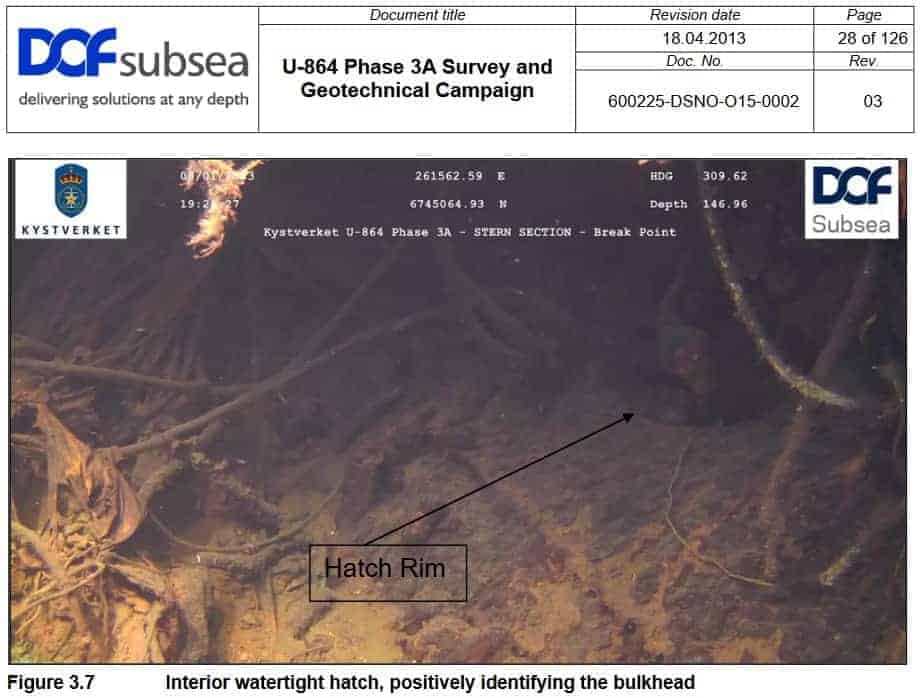
New calculations of the fracture zone show in this report that both pressure hulls are intact, and that the damaged part of the cargo keel is approx. 7-10% of the total, not 30% as calculated in 2006.
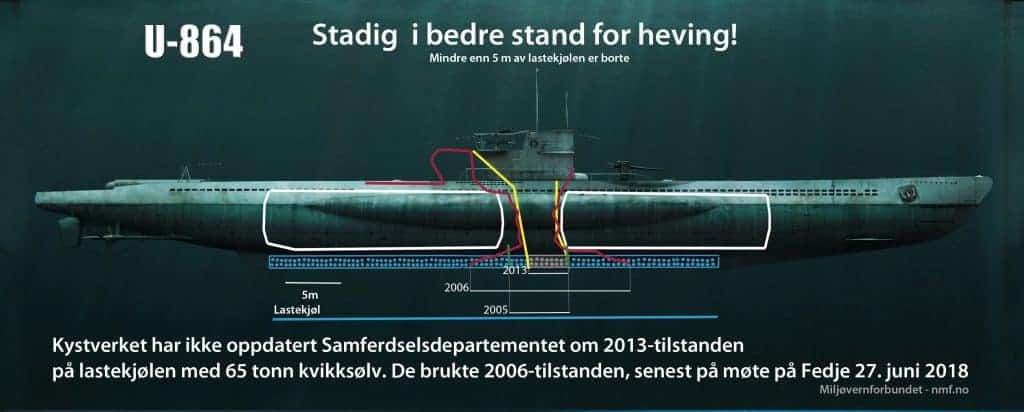
That the hull is in poor condition is not relevant, as the Coastal Agency refers to the shaped hull, which is made of thinner materials.
The shaped hull is not relevant for the lifting, as the wires will be fixed in the 22mm thick pressure forests. The cargo keel is welded to the pressure hull. This means that the molded hull could in practice have been rusted away, and an elevation is still both justifiable and possible. Only the pressure hull and cargo keel are significant structures that are important for a lift.

Illustration: NorthWest 3D
By calculating that 90% of the mercury is still encapsulated in the cargo keel, this means that approx. 60 tonnes can be lifted in two shifts.
Few or no bottles will fall out. They had already fallen out in 1945, when the two hull parts were on their way to the seabed.

Illustration: NorthWest 3D
The Swedish Environmental Protection Association demands that the Ministry of Transport and Communications re-evaluate the Coastal Administration's proposal for cover-up, as new technology and EU legislation put an end to cover-up of the mercury.
It must be possible to raise U-864 to get the mercury out of the marine environment forever.
Covering up U-864 is illegal
Since 2010, the Norwegian Government has planned environmental crime by spending NOK 10 million to investigate the cover-up of mercury in salt water.
A cover is illegal, as it is not allowed to store mercury in salt water/connection to salt water.
EU mercury regulation EU 2017/852 says that mercury cannot be stored on land for more than a year, and must be placed protected from atmospheric water inside salt mines, or in mountains. The storage must be reversible.
Mercury landfill on the seabed
Covering U-864 with the mercury is to be defined as two large compact landfills (the cargo keel contains over 60 tonnes of mercury.) Covering will be an irreversible measure, which is also illegal in salt water. Ref: EU mercury regulation EU 2017/852
Norway is also bound by The Minamata Convention, which requires the clean-up of toxic emissions in the marine environment. Norway is obliged to register sources of mercury pollution with the European Commission by 1 January 2020. This deadline has now been exceeded.
Sources:
- EU mercury regulation EU 2017/852
- The government on the implementation of the Minamata Convention
- The Minamata Convention on Mercury
The government is committing an environmental crime by not doing anything about U-864
As of today, the Government is also committing ongoing and increasing environmental crime by allowing the wreck/wreck area to leak approx. 4 kg of mercury per year. (NIVA) Since 2003, it amounts to approx. 68 kg of mercury (1/1000 of the total mercury load).
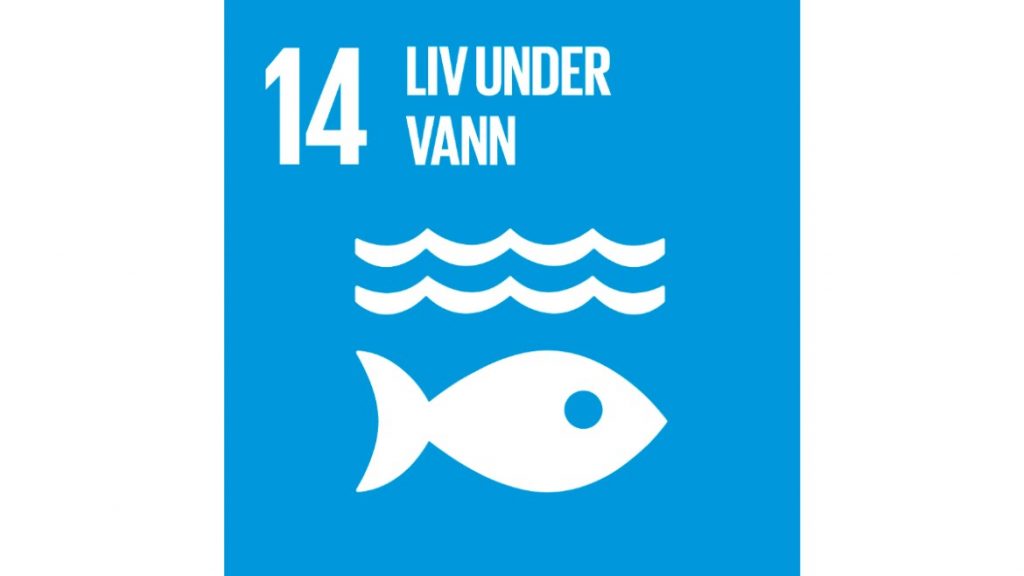
Norway violates the UN's sustainability goal no. 14 Life under water
(Excerpt)
14.1 By 2025 prevent and i significantly reduce all forms of marine pollution, especially from land-based activities, including pollution caused by marine litter and nutrients.
14.2 By 2020 manage and protect the ecosystems in the sea and along the coast in a sustainable way in order to avoid extensive harmful effects, including by strengthening the resilience of the systems and take restorative measures to make the oceans healthy and productive.
14.a Strengthen scientific knowledge, build up research capacity and transfer marine technology, and at the same time take into account criteria and guidelines from the Intergovernmental Oceanographic Commission for the transfer of marine technology, with aim to improve the condition of the sea and increase marine species diversity's contribution to development in developing countries, particularly in small developing island states and the least developed countries.
14th c Increase the conservation and sustainable use of the oceans and marine resources by implementing international law provisions as laid down in the UN Convention on the Law of the Sea, which forms the legal basis for the conservation and sustainable use of the ocean and marine resources, as is also apparent from point 158 of the UN report "The Future We Want".
Source:
The Minamata Convention on Mercury
The Swedish Environmental Protection Agency stands by our position, which has not changed since 2004, U-864 must be raised, and the mercury must be removed from the marine environment, for safe disposal. By leaving the mercury in salt water, it will leak more and more poison into the environment, destroying organisms and fish in the food chain. They ingest methylmercury, which is converted mercury in contact with salt water. We end up getting this poison in the seafood we eat from the North Sea and Atlantic Ocean.
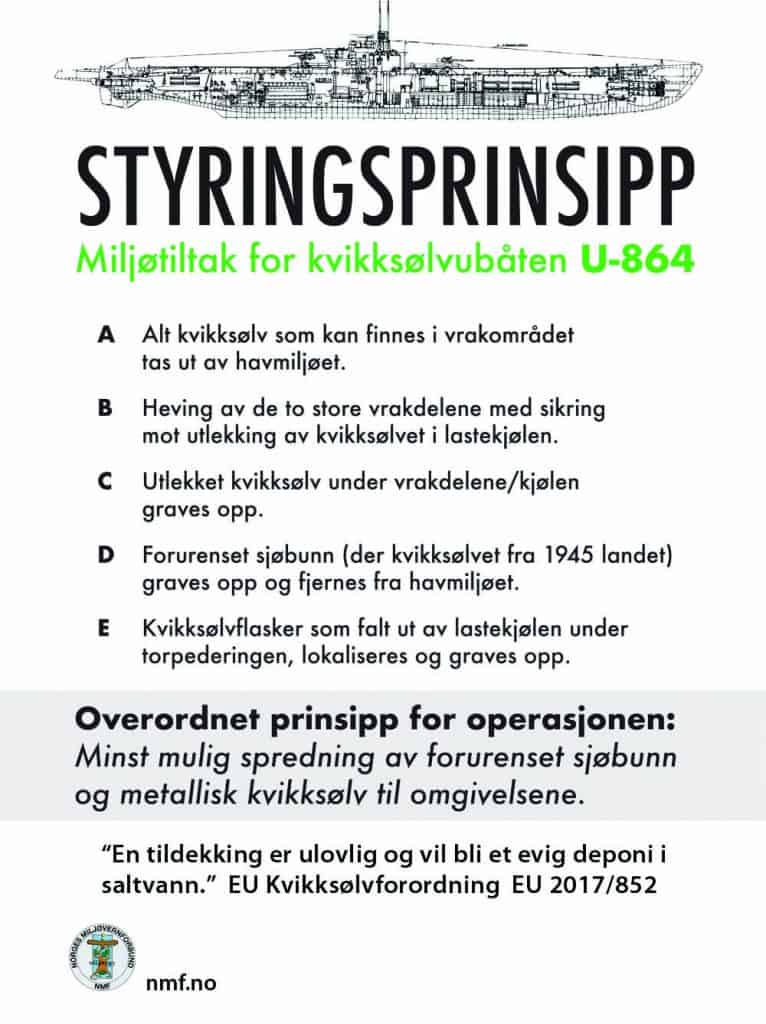
The Swedish Environmental Protection Agency's management principle, download and distribute..!!
Raising is the only solution that safeguards the marine environment and health in the short and long term!!!
- New technology provides protection against the leakage of mercury during elevation
- Cleanup/digging on the seabed is possible without spreading



